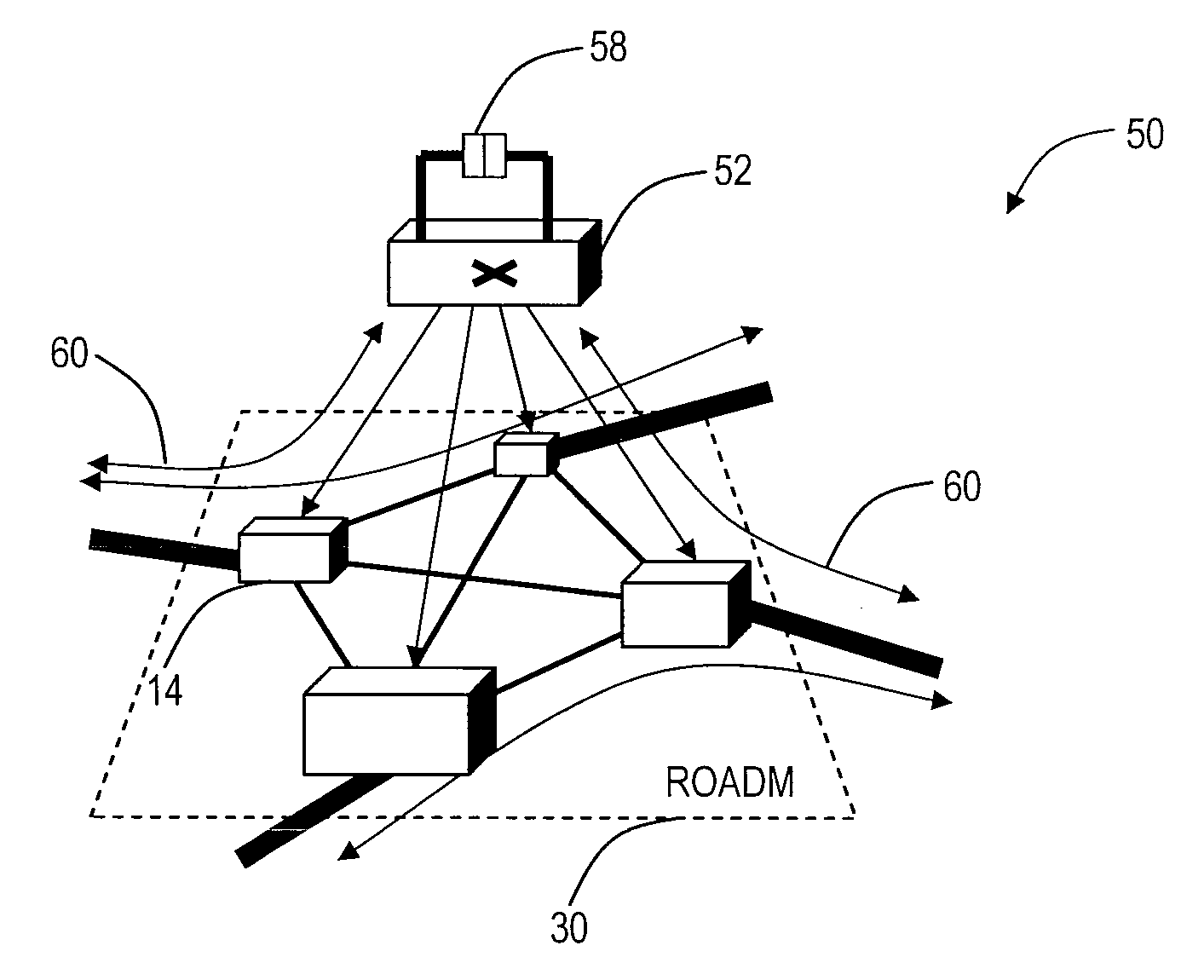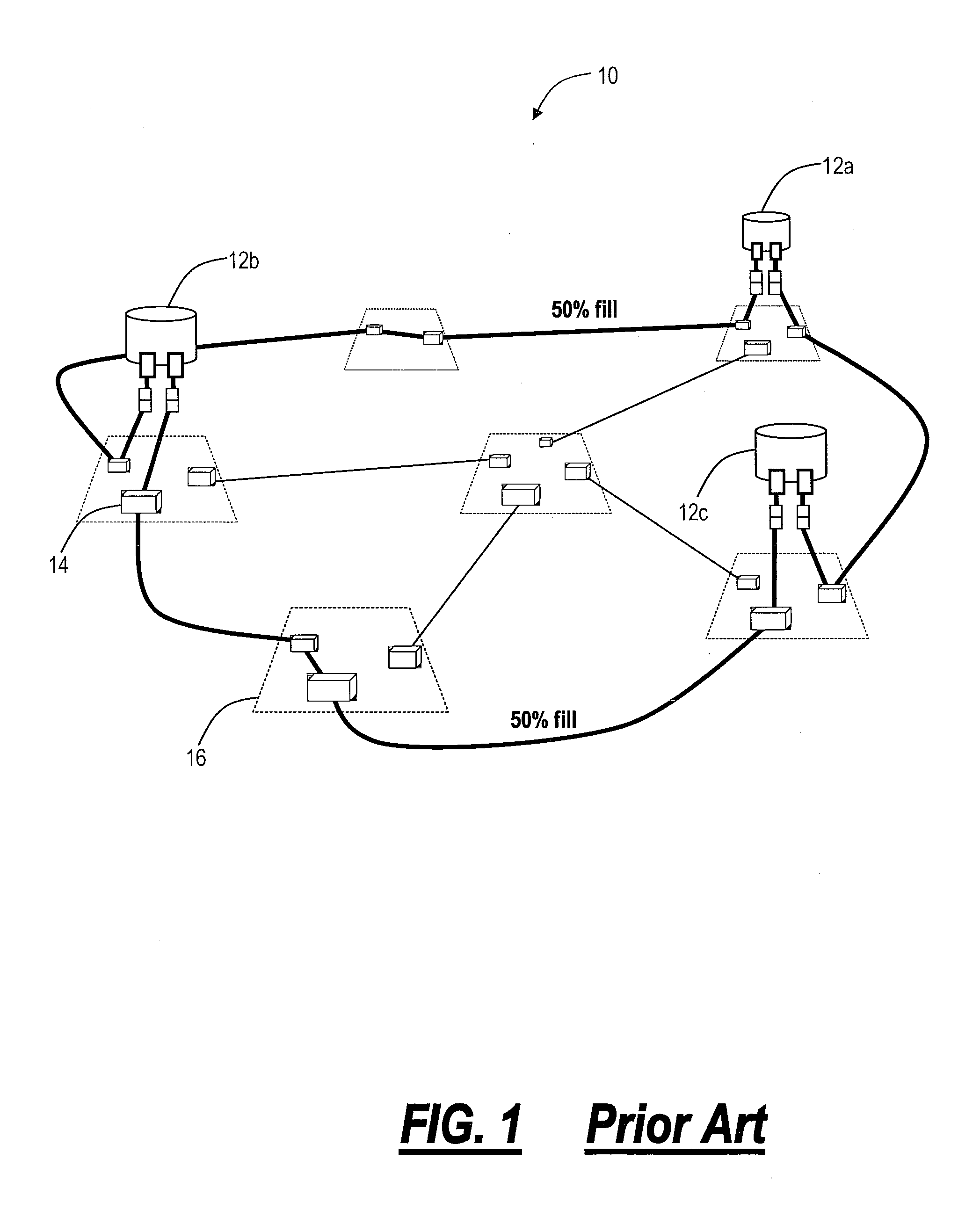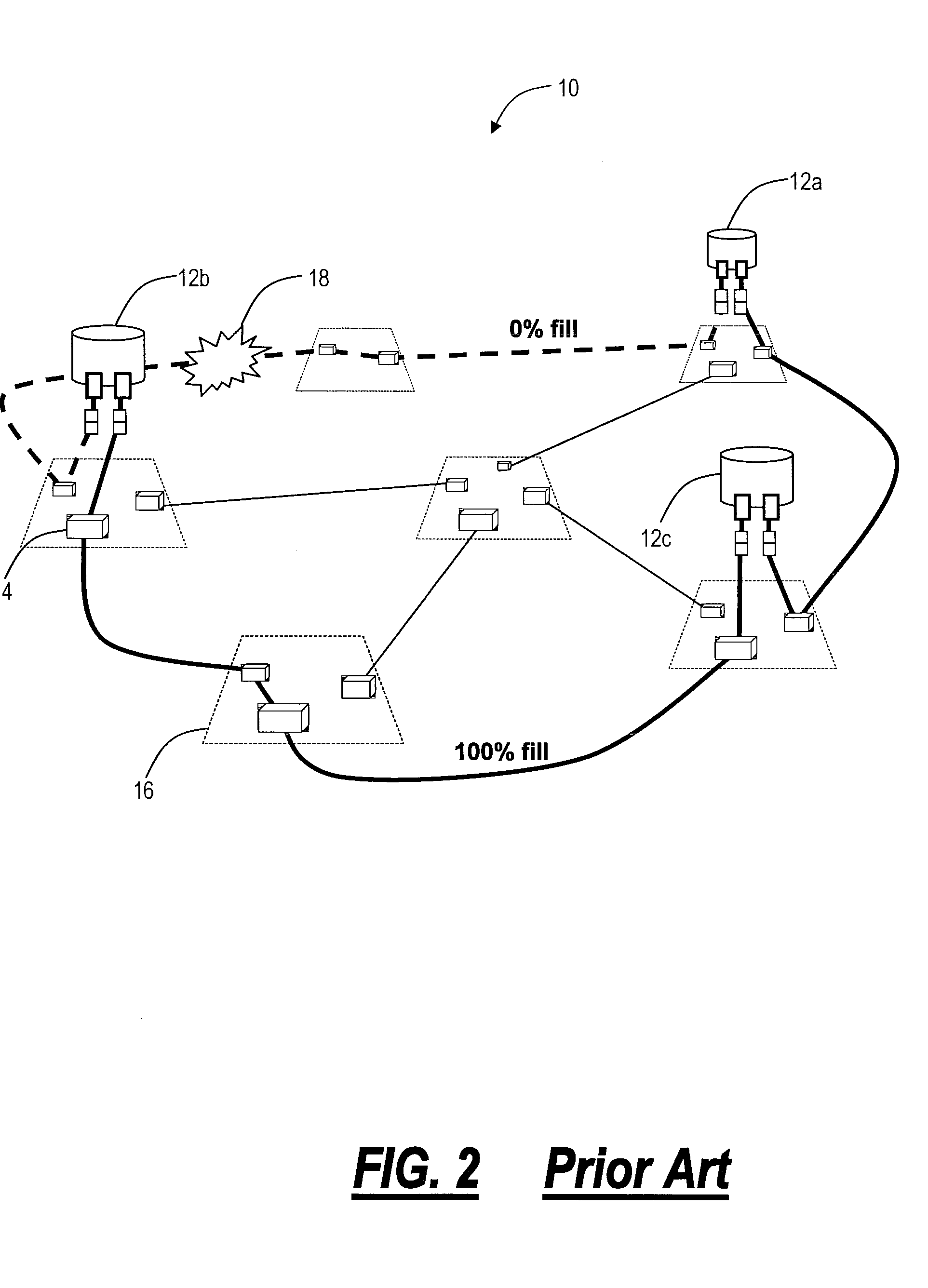Directionless optical architecture and highly available network and photonic resilience methods
a network and optical architecture technology, applied in the field of optical networks, can solve the problems of unfavorable network connectivity, unfavorable network connectivity, and the cost of 40 g or 100 g interfaces required to support core router connections is not as cost-effective, and achieves superior resiliency, reduced deployment costs, and increased resiliency
- Summary
- Abstract
- Description
- Claims
- Application Information
AI Technical Summary
Benefits of technology
Problems solved by technology
Method used
Image
Examples
Embodiment Construction
[0054]In various exemplary embodiments, the present invention provides a directionless optical architecture for reconfigurable optical add / drop multiplexers (ROADMs) and wavelength selective switches (WSSs). The directionless architecture utilizes a directionless wavelength switch coupled between client devices and ROADMs / WSSs to eliminate the need to hard-wire client devices to a wavelength division multiplexed (WDM) network. Accordingly, client device connections can be automatically routed without manual intervention to provide a highly resilient network design which can recover route diversity during failure scenarios. Additionally, the present invention minimizes deployments of costly optical transceivers while providing superior resiliency. Further, the present invention couples the directionless optical architecture and associated optical protection mechanisms with existing mesh restoration schemes to provide additional resiliency. Here, the present invention provides mesh re...
PUM
 Login to View More
Login to View More Abstract
Description
Claims
Application Information
 Login to View More
Login to View More - R&D
- Intellectual Property
- Life Sciences
- Materials
- Tech Scout
- Unparalleled Data Quality
- Higher Quality Content
- 60% Fewer Hallucinations
Browse by: Latest US Patents, China's latest patents, Technical Efficacy Thesaurus, Application Domain, Technology Topic, Popular Technical Reports.
© 2025 PatSnap. All rights reserved.Legal|Privacy policy|Modern Slavery Act Transparency Statement|Sitemap|About US| Contact US: help@patsnap.com



